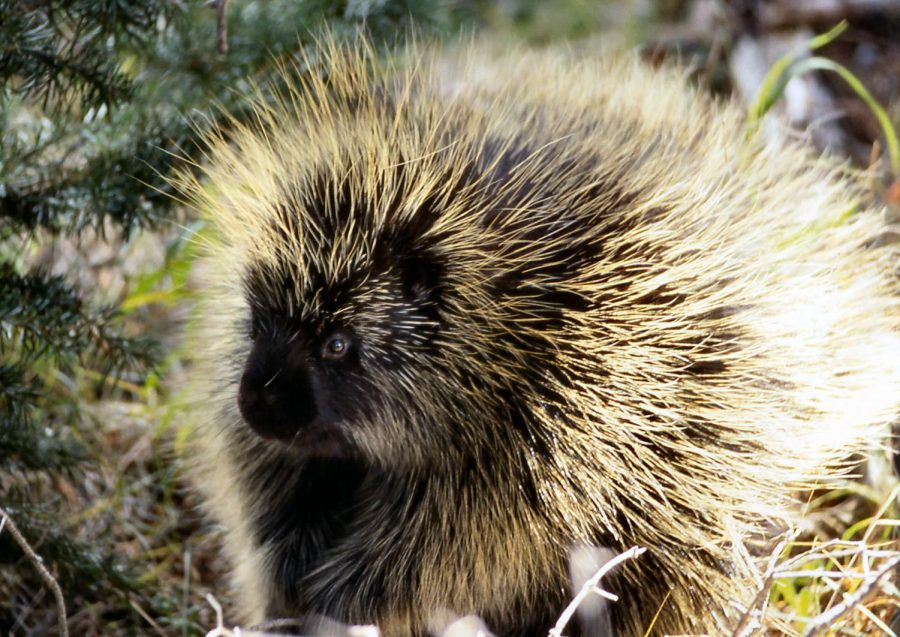Mammal of the Month: Porcupine
Credit: Wikimedia Commons
November 3, 2017
Welcome to the running series known as Mammal of the Month, returning for a second of many years to the Western Hemisphere. Once per issue, we’ll take a journey deep into the mammalian world, focusing on one creature at a time. Volume II, Issue I, let’s begin with the Porcupine.
When it comes to the Porcupine, few people can see beyond its prickly exterior, and few take the time to really understand these noble creatures.
The word “porcupine” simply refers to a mammal in one of two distinct families, either the family Hystricidae, Old World Porcupines or Erethizontidae, New World Porcupines. Both families are in the order Rodentia, and they differ greatly from each other.
Old World Porcupines, as the name suggests, are more old fashioned. They live in Europe, Western or Southern Asia, and several areas in Africa (i.e. the Old World). They tend to be bigger than their western counterparts; the Crested Porcupine can grow to be over 60 pounds. They sleep all day, and come out at night to dine on the local bark, roots and fruits, as well as some farm crops if they can get them. Due to this habit, they have been labeled a pest in Kenya, and are harassed and shot at whenever they try to eat. Another unique trait of the Old World variety is the arrangement of their quills. They come in one big bunch starting at their head and flowing downwards, resembling a slicked back hairstyle from the 50’s.
New World porcupines are very different. They inhabit most of North America and the Northern section of South America, which is considered, you guessed it, the New World. They have several size and behavior differences from the Old World variety. Their quills protrude from all angles of their back, which ends up resembling some sort of punk rocker with a blond mohawk and a fur coat. The New World porcupines are excellent climbers, and often live in trees. Some even spend their entire lives up there. Others dig burrows underground and split their time. The largest New World Porcupine, the North American Porcupine, can grow up to 40 pounds, whereas the smallest can only grow up to 42 ounces. Their diet is similar to that of the Old World type, and consists of leaves, pine needles, and bark.
While the two animals are very different, they are both porcupines after all, and share many similarities.
Primarily, what everyone thinks of when they think porcupine, the quills. Up to 30,000 on one animal, to be exact. These quills are one of the best self-defense mechanisms that mother nature has ever gifted to any creature, great or small. Predators of the porcupine have to attack it from underneath to have any success at all, and even then escaping unscathed is nigh impossible. The quills themselves are made of long hairs that have been coated in keratin, which is a structural protein. They are embedded in the porcupine’s skin. They are easily released through contact, however, contrary to popular belief, the porcupine cannot shoot quills from afar.
Bonus fact: The Porcupine is used to represent the United State’s Libertarian Party, in the same fashion as the donkey and elephant for the Democratic and Republican parties. Some say this is because the porcupine is a mild-mannered, friendly animal, but is armed and ready to defend itself if disturbed.









